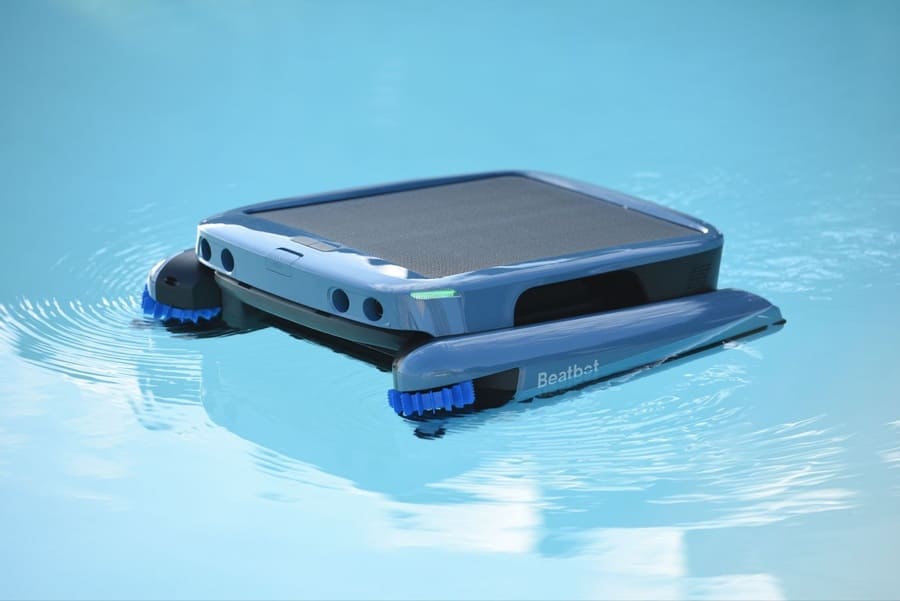
Consequently, when your Robot Pool Cleaner does not create enough suction, it can aggravate and leave your pool feeling a little less clean. There are several reasons why your pool vacuum may not have suction, and finding a trustworthy source of the problem will allow you to fix it swiftly. In this post, we will detail the common reasons your pool vacuum cleaner pool to be and the solutions to bring it back to performance.
A robot works off heavy-duty suction to capture anything from dirt, debris, and even algae in your pool. When a pooling vacuum robot or swimming pool robot cleaner does not serve suction effectively, this can lead to various reasons. Knowing what you’re dealing with, be it a pool vacuum for algae or common pool debris, is key to getting the appropriate solution. This guide will show you the common problems that can lower suction and how to fix them.
A clogged or dirty filter is one of the most common reasons your robot pool cleaner has reduced suction. Leaves, dirt, and algae can accumulate over time in the filter, blocking the flow of water and reducing suction.
Solution: Clean or replace the filter in your pool vacuum cleaner regularly. For Beatbot AquaSense 2 Pro and other high-performance models, please refer to the manufacturer’s instructions for cleaning the filter for better unit performance.
You’ll also want to check for hose blockages if it’s a hose-on-style pool vacuum robot. Tangles of leaves, small detritus, or even algae can block the hose, limiting the vacuum’s ability to suck things up.
Solution: Remove the hose and check it for clogs. You can use a garden hose to flush lots of debris or a long object to clean inside the hose. That will fix the suction.
The impeller and suction nozzle need to be replaced over time, and wear and tear can dilute their performance, resulting in weak suction.
Solution: Examine the impeller and other key components for any visible damage. If you discover any problems, replace damaged components or contact the manufacturer for repairs.
Low water flow could significantly decrease suction. This could be due to an issue with the pool pump, clogged skimmers, or a low pool water level.
Fix: Make sure your pool water level is high enough to submerge your pool vacuum intake valves. Examine your skimmer and other suction ports for obstructions, as well. For wall-climbing pool cleaners, check that the system is getting adequate water flow to clean the wall.
If your robot pool cleaner is not getting enough power, the suction will be poor. This may occur if power cords are damaged or not properly connected.
Fix: Check the power cord for signs of wear or damage. If needed, change the cord or check that it is plugged in properly.
Several robotic pool cleaners, including the Beatbot iSkim Ultra, feature adjustable settings for cleaning modes. Your cleaner can also lack suction if your cleaner is in the wrong mode.
Fix: Make sure that the settings on your robotic pool cleaner show that it can drain dirty water with maximum suction. For example, going from light cleaning mode to deep cleaning mode will increase suction power.
In some pools, a pool booster pump may be used to increase the vacuum’s suction power. However, if the booster pump isn’t working correctly, the vacuum’s suction will weaken.
Fix: Inspect the booster pump for a blockage or mechanical failure. Ensure that it is well-connected and functional. Replace or repair the booster pump as required.
If your pool has an abundance of debris, your robot pool cleaner may find it challenging to keep pace, decreasing its suction productivity. When dealing with a lot of debris, a pool vacuum robot (or any cleaning system) cannot generate enough suction.
Solution: Manually remove large debris like leaves and sticks before using your pool vacuum. This will enable the vacuum to concentrate on smaller particles, providing maximum suction.
If nothing else has worked, and your robot pool cleaner still doesn’t seem to provide a strong enough suction, you may want to invest in a new one. If you drive an older model or a vehicle that has seen better days, some components may not work as well as intended.
Alternatively, upgrade to a Beatbot AquaSense 2 or other high-performing Maytronics versions for powerful suction and additional features.
If your robot pool cleaner doesn’t seem to provide adequate suction, several common problems could cause this. From clogged filters to low-water flow, most issues can be addressed with some maintenance. To ensure your robot pool cleaner works efficiently, regularly check its pool vacuum, hoses, filters, and booster pumps. If you constantly fight the suction issue, it may be time to upgrade to something more powerful, such as the Beatbot AquaSense 2 Pro.
So, as you can see, even if your vacuum cleaner is somewhat malfunctioning, it is still possible to get a little more life out of it. Head over to our expert guides or reach out to us for some specific advice on swimming pool robot cleaners. With proper care and maintenance, you’ll have a sparkling clean pool!

Welcome to Tile Pro Depot! We established this site to service the specific needs of the tile installation professional. Tile installation tools, tile setting materials, premixed grout and more tile installation products online at Tile Pro Depot.